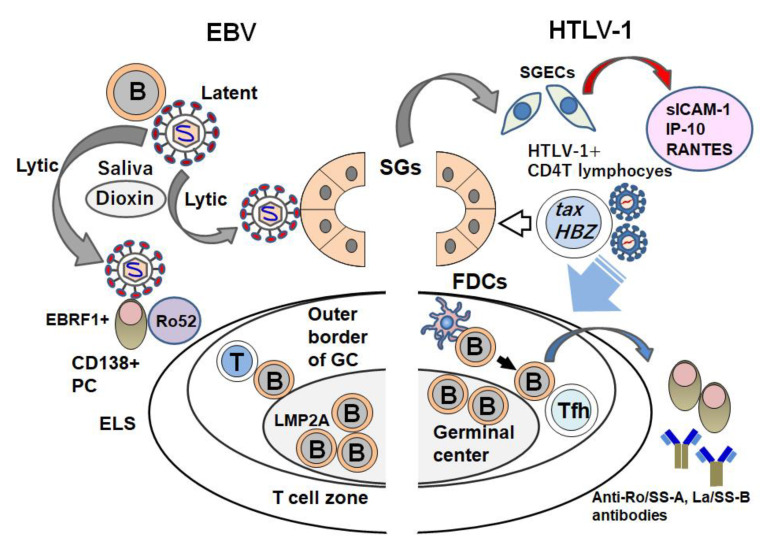Figure 3.
The different roles of EBV and HTLV-1 in the pathogenesis of SS. EBV exists in B cells and/or B cells that expresses LMP2A in ectopic lymphoid structures (ELSs) as a latent phase. Once the reactivation of EBV is induced by environmental factors (including dioxin), EBV changes to the lytic phase. Lytic EBV can infect SGECs and perifollicular EBRF+ plasma cells (PCs) that can react with Ro52. In contrast, HTLV-1 that bears tax and HTLV-1 bZIP factor (HBZ) infects salivary glands of patients with SS. An in vitro study showed that after the HTLV-1 infection of salivary glands, SGECs express inflammatory cytokines or chemokines including soluble ICAM-1, IP-10, and RANTES. Inhibitory effects of HTLV-1 toward ELS components (including B cells), PCs that produce anti-Ro/SS-A, La/SS-B antibodies, follicular dendritic cells (FDCs), and follicular helper T cells (Tfh) have been considered.

